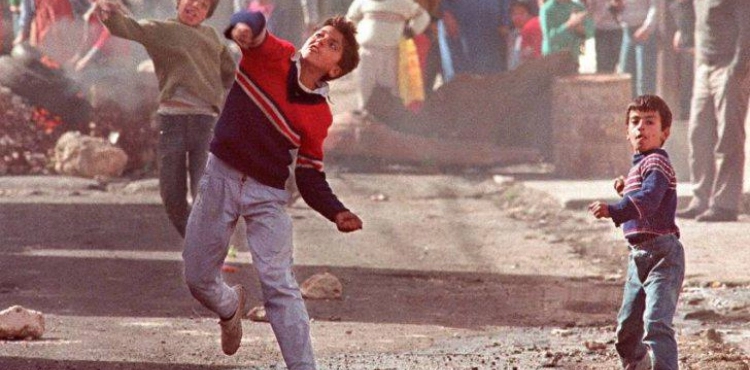The Palestine Center for Prisoners Studies said that the arrests carried out by the Israeli occupation have become a daily phenomenon, inherent in the life of the Palestinian citizen, and have affected nearly a million Palestinians since the occupation of the Palestinian territories in 1948, and have reached since the 1987 Intifada until today. (348) thousand cases.
In a statement on the occasion of the 33rd anniversary of the Intifada, the Center emphasized that the occupation uses the policy of arrests as a weapon and a tool of oppression with which it fights the Palestinian presence with the aim of subjugating and intimidating it, and it is one of the means of collective punishment to drain the Palestinian’s energy and break his will.
"Despite the large number of arrests that Palestinians have been subjected to, the occupation has failed to achieve its goals of subjugating and deterring the Palestinian people," said Riyadh Al-Ashqar, director of the center.
Al-Ashqar indicated that (210) thousand arrests were recorded from the beginning of the intifada until the arrival of the Palestinian Authority in mid-1994, affecting all groups and segments of Palestinian society, including thousands of whom were arrested more than once, indicating that the occupation opened many prisons and detention centers to accommodate these large numbers. Most notably, the Negev desert prison in 1988, in which tens of thousands of prisoners were taken and martyred within it.
He stated that (10,000) arrests were recorded between 1994 and the outbreak of the second Al-Aqsa Intifada on September 28, 2000, and (97) thousand arrests during the years of the Al-Aqsa Intifada until the gift of Jerusalem in October 2015, which witnessed About (31) thousand arrests.
Al-Ashqar pointed out that the conditions of prisoners during the first intifada were much worse than they are now, and the prisons lacked the minimum conditions for simple life, and there were not many tools that the prisoners were able to force after that to force the occupation to provide them with the battles of empty stomachs.
He pointed out that there are still (26) prisoners in the occupation prisons since and before the first intifada, and they are the old prisoners whom the occupation refused to release as part of the fourth batch of the agreement to revive negotiations between the authority and the occupation, including (9) prisoners from the West Bank, the oldest of whom is the captive Muhammad Ahmad Al-Tous from Hebron. And he has been detained since 6/10/1985, and (12) prisoners are from the 48 lands, the oldest of them and the oldest of all prisoners, Karim Yusef Yunus, who has been detained since 6/1/1983, and (5) from Jerusalem, the oldest of them is the prisoner Samir Ibrahim Abu Nimah, who has been detained since 20 10/1986, and one prisoner from the Gaza Strip, Diaa Al-Falouji, after the death of the prisoner Faris Baroud.
During the seven years of the Hijrah Uprising, the captive movement provided (43) martyrs out of (226) martyrs who were the total martyrs of the captive movement, including (23) martyrs who died as a result of torture, (11) prisoners were martyred as a result of deliberate medical negligence, and (2) were martyred as a result of They were shot directly, and (7) prisoners were also martyred as a result of deliberate killing in cold blood after their arrest.












